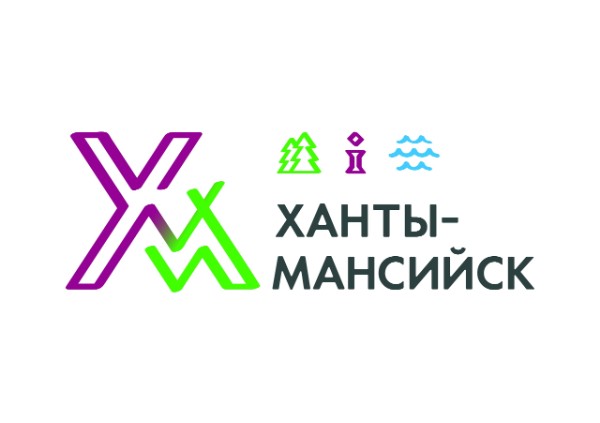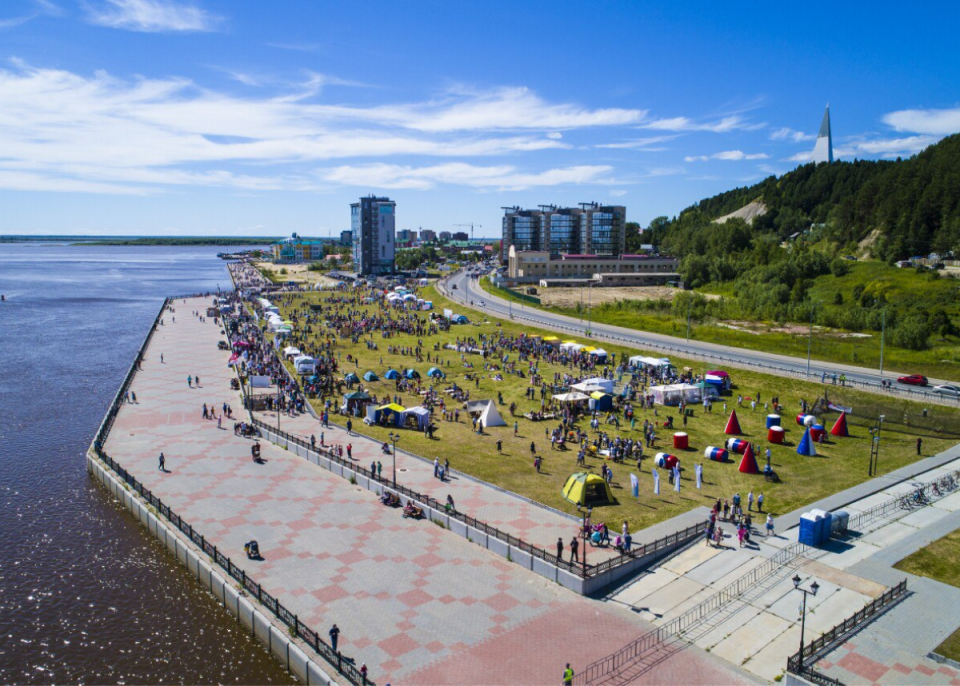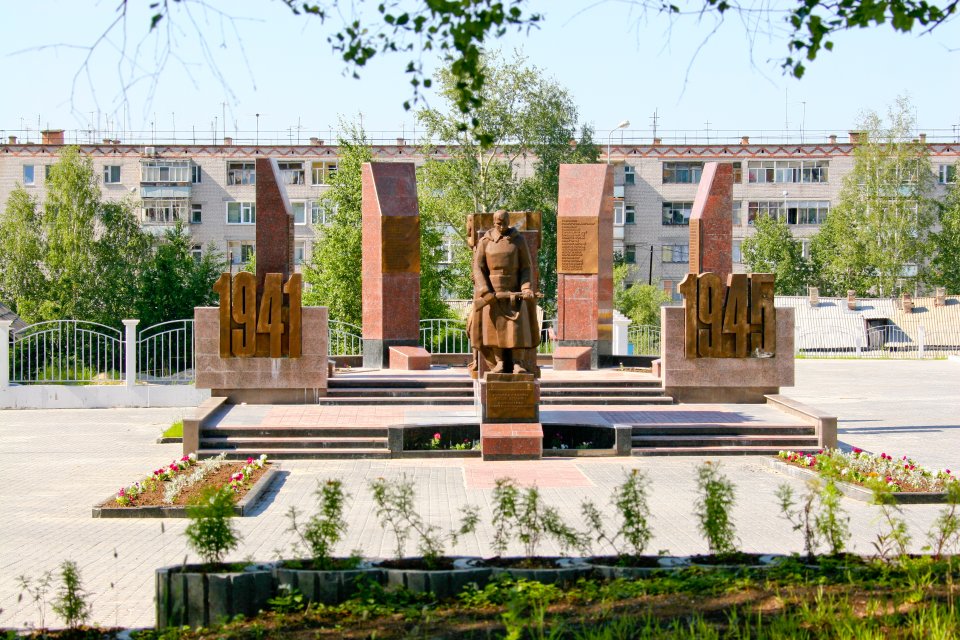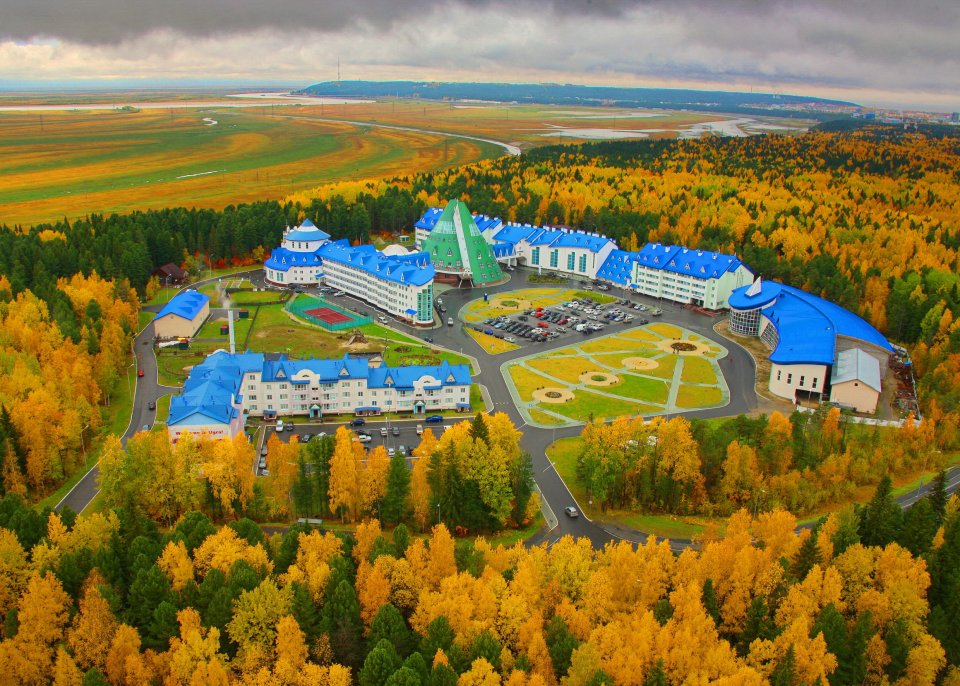
Department of Tourism Development and External Relations of Khanty-Mansiysk
At first glance, Khanty-Mansiysk gives the impression of a young and daring northern city. But there is a very harmonious combination of modern technology and the memory of traditions of the past. This city cannot boast of luxurious palaces or mansions, but demonstrates innovative sports centers. There are no world-famous historical relics here, but the history of this place is several centuries old.
History of Khanty-Mansiysk: from a small village to a modern city that one would love to return to
Samarovsky Yam
The first mention of the future Khanty-Mansiysk in chronicles dates back to the 16th century. This is the time of the development of new eastern territories. At that time there was very little information about the northern settlement and it was mentioned only as a place of battle between Prince Samar and Ermak's troops in 1582.
But by the middle of the 17th century, this area had already become a kind of connecting point between Western and Eastern Siberia. Then Samarovsky Yam was founded and the first permanent residents appeared - the families of coachmen settlers who arrived here by order of the tsar. Since 1637 Samarovsky Yam was among the new Russian settlements beyond the Urals.
An advantageous location at the intersection of important routes allowed Samarovsky Sloboda to become a center of trade. Merchants from all over the world met here. Some took textiles, spices, and jewelry to the east, while others offered furs, fish, and other gifts of Siberia in exchange.
But Russia was growing, and gradually the trade routes shifted southward and the inhabitants had to learn new trades and develop local crafts. In 1786 during the administrative reform, when Siberia was divided into districts, Samarovsky Yam received the status of a village and the center of Samarovsky district of the Tobolsk vicegerency. The name of the village "Samarovsky Yam" was also transformed into simply "Samarovo", which, by the way, has nothing to do with the city of Samara.
In the 19th century, the settlement was visited by the first travelers and scientists. They described the area as a beautiful village located among picturesque hills.
At the turn of the 19th and 20th centuries Samarovo grew and developed. Among the local residents appeared wealthy merchants and landowners. Their rich homes became a decoration of the village.
Hide

Ostyako-Vogulsk becomes Khanty-Mansiysk
In the early 20th century the first exiles sent to Siberia for freethinking started to arrive to Samarovo. This practice was maintained for many years.
When the Soviet government took power in the 1930s, construction of Ostyako-Vogulsk, the future capital of the region, started a few kilometers away from Samarovo. It was built exclusively by special resettlers. The roads were not built, but literally cut through the taiga, and the houses - one- and two-storey barracks - were built from the trees stacked here (actually, for this reason there are no historical buildings preserved in today's Khanty-Mansiysk).
In 1940, the Ostyako-Vogulsk was renamed into Khanty-Mansiysk (by the self-name of the ancient indigenous Khanty and Mansi). In 10 years the settlement got the status of a town, and Samarovo village became its part.
Hide

New turn of history
In the middle of the century the quiet and measured life of Khanty-Mansiysk found a new turn of events - natural gas was discovered in the district, and later - oil deposits. This is when a new history of the town began - it began to grow and develop at a fast pace. The airport was repaired, new houses, schools, kindergartens, libraries and culture centers were built. Thousands of people came to raise the oil region.
In 1990-2000s, the town was practically completely rebuilt: two-storey wooden houses were replaced with modern residential quarters and unique social infrastructure facilities were built. World biathlon came to the city.
The grand transformations took place at that time not only in the capital of Khanty-Mansiysk, but in the region as a whole. Probably the most important is the construction of the highways and bridges of federal significance that connected Ugra with the "mainland" and the cities of the autonomous okrug with each other. Khanty-Mansiysk has become even more open and accessible for the visitors.
Ugra capital is a modern, sporty and ambitious town in the 21st century. Every year a lot of tourists, athletes, students and specialists in different fields come here. But the people who live here remember their roots, keep numerous artifacts in museums and private collections and are always glad to share their history with you.
Hide
















